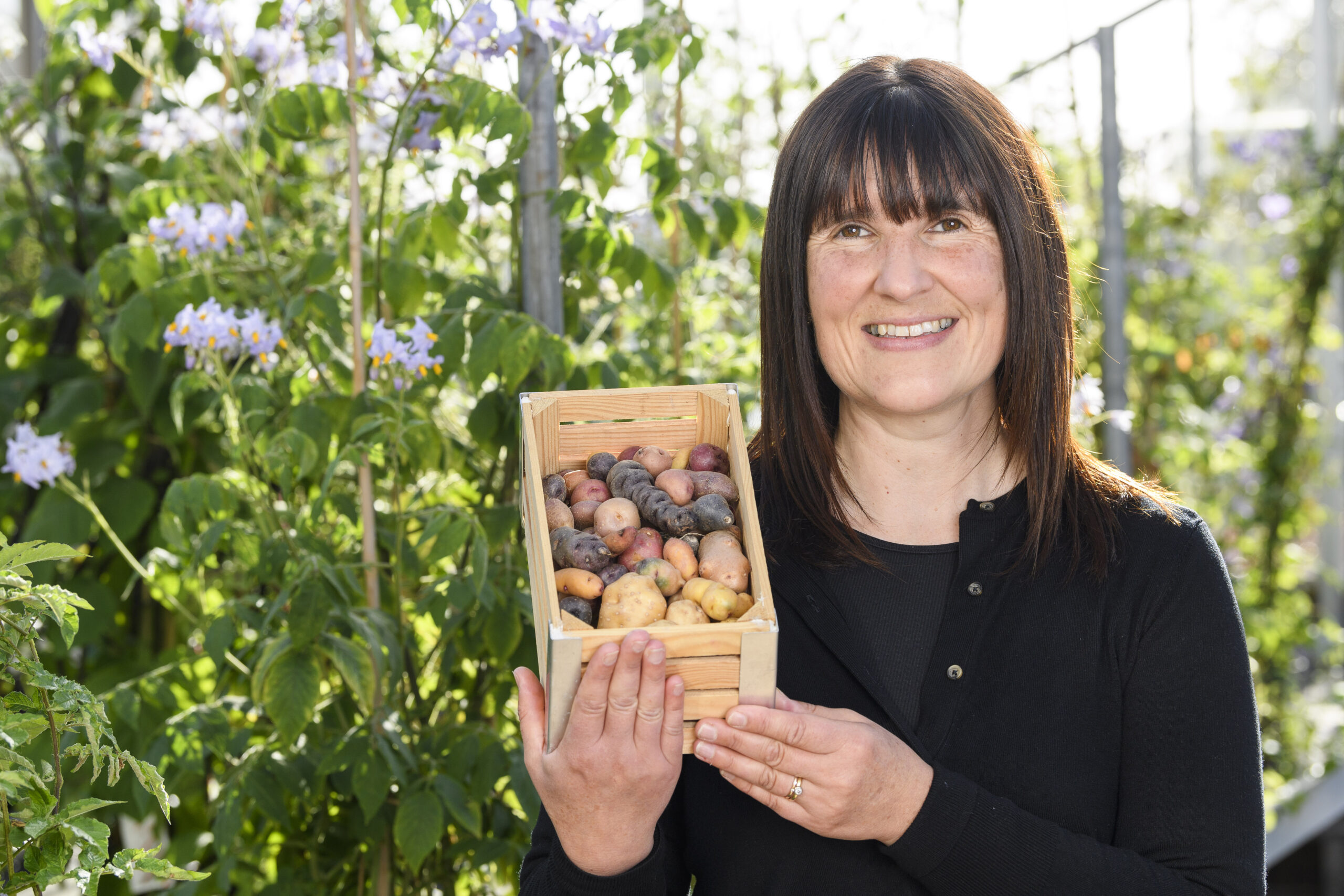The power of potatoes
In the 18th century, James Hutton, a leader in the Scottish Enlightenment movement, was one of the first to observe and write about potatoes being grown in Scotland.
Many people were suspicious of the crop, as some of the early tubers were “finger-like and black” – a symptom of leprosy.
Colin Campbell, Chief Executive of the James Hutton Institute
However, the “dangerous” crop turned out to be the one to bring millions out of hunger and poverty, and fuelled the labour force of the agricultural and industrial revolutions of the 18th Century. Today (30 May) marks the UN’s International Day of Potato.
Potato is the world’s third most important staple food crop and the UK’s second. It has the highest rate of food produced per unit area and is a favourite on the UK’s dinner plate. While it makes our most popular snacks (crisps), it also has great nutritional value. It is one of the healthiest carbohydrates and the only staple food that could replace animal proteins for a healthy diet, as it contains all the amino acids found in meat.
Hundreds of years on, it’s no coincidence that the Hutton is home to the National Potato Innovation Centre (NPIC). Bringing together scientists from around the UK, we aim to fast-track critical research of this major staple food crop, accelerating potato breeding and discovery and creating resilient production systems. This is crucial as our self-sufficiency on potato has declined from 100% in the 1970s to just 65% today.
“I wonder what James Hutton would say if he was alive today, and saw the work we do to help our super spuds thrive?”
Colin Campbell, The James Hutton Institute

As well as developing several varieties of potato well-adapted to local growing conditions, our recent work includes creating new varieties suited to growing in sub-Saharan Africa, including Malawi. They are more heat, disease and pest-resistant than our British varieties and produce their tubers much faster. This means they avoid problems associated with erratic rainfall or droughts and will allow potato farming to expand across non-traditional growing areas and seasons.
Closer to home, the Scottish seed potato industry is under threat from a variety of pests and diseases. We are using trial plots and mathematical models to track these threats, highlighting different patterns of spread in different areas and uncovering various drivers of outbreaks. These models could have a huge impact on farmers and growers, by providing information on practices that minimise disease spread.
The jewel in our crown, however, is the Commonwealth Potato Collection, of which the Hutton is the custodian. This genetic treasure trove of more than 1,300 different types of potato represents more than 90 different species. Each accession traces back to a handful of berries or tubers collected from potato plants in South or Central America (including the black finger-like ones) gathered from the wild or obtained from growers at a market. This collection covers a vast array of species and genes that are supremely able to thrive in diverse and challenging environmental conditions, and we use novel trait discovery techniques and are able to breed from these hardier species to create new varieties.
I wonder what James Hutton would say if he was alive today, and saw the work we do to help our super spuds thrive?
Press and media enquiries:
Sharon Simpson, Director Communications, Sharon.simpson@hutton.ac.uk. M: 07857 528757.
